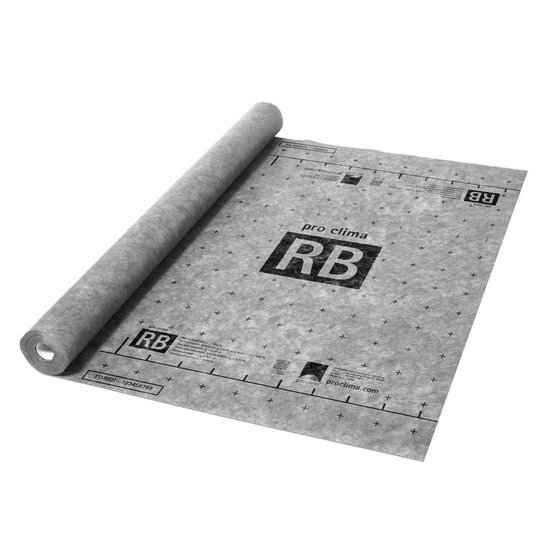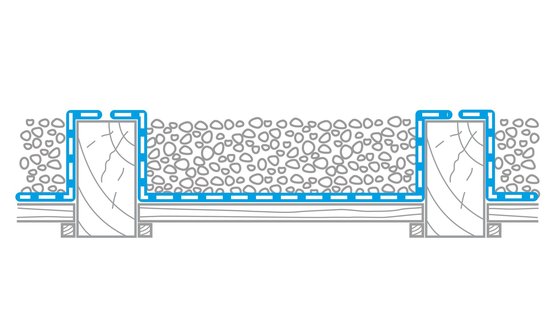Dust protection membrane


Advantages
- Easy to work with: robust PP fleece
- Flexible application: for dry and slightly moist fillings
- Reliable protection against dust thanks to particularly close interweaving
- For well-protected building structures: particularly diffusion-open
Areas of application
For use as a dust and trickle barrier for rooms underneath ceilings with loose-fill insulation and in floors.
Installation instructions
General conditions
The pro clima RB dust protection membrane protects against dust and fibres, and can be used on floors or on the underside of ceilings. The membrane is to be installed on a subsurface that is sufficiently pressure-resistant and that can bear the mechanical stresses resulting from insulation materials, fillings or other inserted materials, for example. The dust protection membrane itself must remain free of stresses of this type.
If the membrane is installed from below onto building structures, mechanical fastening of the membrane is to be provided. This can be accomplished either by means of cross battens (for light materials such as mineral wool) or boards that provide support across the full area of the membrane (e.g. if wood-fibre/cellulose insulation or fillings are used).
Create membrane overlaps of approx. 10 cm (4”). The marking that is printed onto the membrane will serve as a guide here.
If required, these overlaps can be taped over with adhesive tapes from the pro clima system (e.g. TESCON VANA all-round adhesive tape). Ensure that there is sufficient application and resistance pressure when applying this tape.
Centre the adhesive tape on the overlap and gradually stick it in place, ensuring that there are no folds or tension. The PRESSFIX application tool can be used to help achieve an even application pressure.
Bonding to rough or mineral subsurfaces can be achieved using the ORCON F adhesive sealant from the pro clima system, for example. To do this, apply a line of adhesive that is at least 5 mm (³⁄₁₆”) thick (more in the case of very rough subsurfaces, if necessary) and apply the dust protection membrane onto this adhesive bed. Do not press the adhesive completely flat.
The RB dust protection membrane can also be combined with slightly moist fillings if the membrane is installed on a pressure-resistant subsurface (e.g. floors or in the spaces between joists). In this case, it is to be ensured that the moisture can dry out and that adjacent materials will not be damaged by this moisture.
Full-surface panelling is to be provided to protect the RB dust protection membrane against mechanical damage and UV radiation. This panelling is not necessary in inaccessible spaces where there is no incident sunlight or scattered light.




